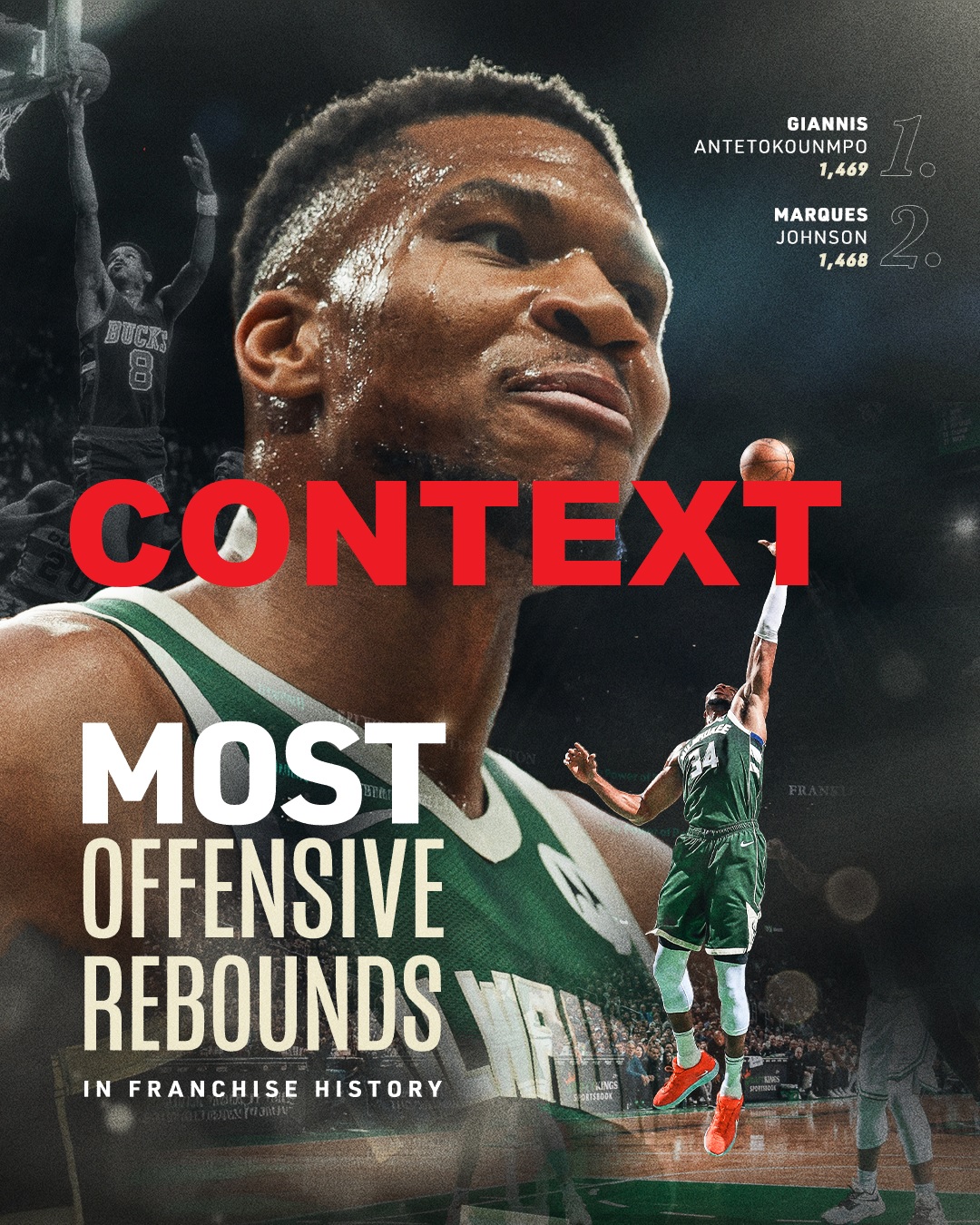
So while having a great argument on Twitter, somebody threw this at me. It looks weird but I know Statmuse AI technology is not great at understanding all questions so I dug a bit deeper. First thought was maybe the “power forward” confused StatMuse. So I tried the same search only for “forward” and got a similar result. Straight to Nba.com website to check and be more specific.
As I suspected, it’s not even close. Giannis isn’t even on the first page of results. Giannis actually has 141 offensive rebounds this season. When asked correctly, StatMuse also shows you this:


The Peak of Giannis’ Offensive Rebounding Prowess
To understand the decline, we first need to revisit the peak. In his early years, Giannis was a rebounding machine on both ends of the floor. His offensive rebounding numbers hit their zenith during the 2018-19 and 2019-20 seasons, where he averaged 2.2 and 2.8 offensive rebounds per game (ORPG), respectively. These figures might not seem astronomical compared to traditional big men like Andre Drummond or Clint Capela, but for a player who often operated as a ball-handling forward, they were remarkable. Giannis’ ability to snatch offensive boards stemmed from his quickness off the floor, his uncanny knack for timing, and his sheer determination to outmuscle opponents.
Those offensive rebounds translated into easy putbacks, kick-outs to shooters, or trips to the free-throw line—crucial elements of the Bucks’ offense during their rise to contention. In the 2020-21 championship season, he still averaged a solid 1.6 ORPG, contributing to Milwaukee’s gritty, second-chance identity. At his best, Giannis was a one-man wrecking crew, turning misses into momentum.
The Numbers Tell a Story
Fast forward to the 2024-25 season, and the stats paint a different picture. Through the early part of this

season (as of April 5, 2025), Giannis’ offensive rebounding numbers have dipped noticeably. While exact stats fluctuate game to game, he’s hovering around 1.2-1.4 ORPG—a significant drop from his peak years. For context, that’s closer to what you’d expect from a perimeter-oriented forward like Jayson Tatum than a dominant interior presence like Giannis. The table here shows again in contested rebounds, the real ones that count, Giannis is again nowhere to be found.
This isn’t a one-year blip, either. The decline has been gradual but steady. In 2022-23, he averaged 1.7 ORPG, which slipped to 1.5 in 2023-24. Now, in 2024-25, the trend continues. While his overall rebounding numbers (defensive boards included) remain elite—often exceeding 11 or 12 per game—the offensive side of the glass has become less of a priority. So, what’s driving this shift?
Evolving Role and Team Dynamics
One explanation lies in Giannis’ evolving role within the Bucks’ system. Early in his career, he was a Swiss Army knife, doing a bit of everything—driving, posting up, and cleaning up misses. But as the Bucks refined their offence around his playmaking and scoring, his responsibilities shifted. With Damian Lardarius joining the team in 2023, Milwaukee leaned harder into a perimeter-oriented attack. Giannis spends more time initiating the offence, setting screens, or rolling to the rim rather than lurking for offensive rebounds.
This shift makes sense strategically. Why have your best player battling for boards when you can have him sprinting back in transition or setting up the next play? The Bucks’ coaching staff, under Doc Rivers since 2024, has emphasised pace and spacing. Giannis crashing the offensive glass might disrupt that flow, especially when teammates like Brook Lopez—a traditional centre – can handle rebounding duties.
Physical Toll and Prioritization
Offensive rebounding is gruelling—think constant jostling, elbowing, and leaping against bigger bodies. Giannis has logged heavy minutes throughout his career, including deep playoff runs, and his injury history (notably knee and ankle issues) might encourage a more selective approach. Why risk a tweak chasing a rebound when he’s already carrying the offence with 30+ points per game? The media and fans are so focused on the scoring, they don’t care it seems.
The Lopez Effect
Brook Lopez deserves a mention here. Since joining the Bucks in 2018, Lopez has been a fixture at center, and his presence alters Giannis’ rebounding opportunities. Lopez, a 7-footer, often stations himself near the rim, gobbling up offensive boards (averaging 1.5-2.0 ORPG in recent seasons). With Lopez in the paint, Giannis can roam the perimeter or attack downhill, but it also means fewer chances to snag those misses himself. The Bucks seem content letting Lopez handle the dirty work while Giannis focuses on higher-value plays.
Scheme and League Trends
The NBA itself has evolved, and offensive rebounding isn’t the priority it once was. Teams now value transition defence and three-point shooting over second-chance opportunities. The Bucks, with shooters like Lillard and Middleton, fit this mold. Why crash the glass when you can get back, set up, and launch a three? Giannis’ decline in ORPG mirrors a league-wide trend where bigs are asked to do less rebounding and more switching or spacing.
Is This a Problem?
His drop in offensive rebounding reflects a more sustainable approach to his game. He’s just doing it less, with stat padding more of a priority. That said, there’s a flip side. In tight playoff games, second-chance points can be the difference. Giannis’ reduced presence on the offensive glass might limit Milwaukee’s margin for error against physical teams who thrive on extra possessions. If the Bucks falter in crunch time, critics will point to this shift as a weakness.

Leave a Reply